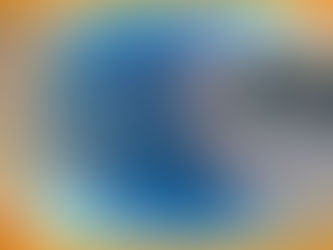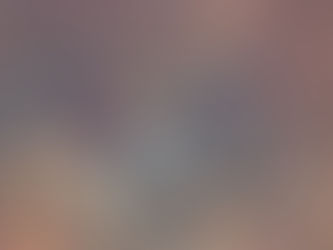Messier 37 - The Salt and Pepper Open Cluster in Auriga
- Antoine & Dalia Grelin

- Apr 6, 2023
- 7 min read
Updated: Aug 19, 2023
There are three open clusters in the constellation of Auriga. Messier 37, or M37, is the largest, brightest, and most populated of the three. M37 is also known as the Salt and Pepper cluster but in my eyes, it looks more like a pair of underwear in space.
Object Designation: M37, NGC 2099
Also known as: The Salt and Pepper Cluster
Constellation: Auriga
Object Type: Open Cluster
Distance: 4,511 light-years away
Magnitude: 6.2
Discovery: Giovanni Battista Hodierna before 1654
This object is great for beginner astrophotography because it's a quick and easy object to photograph. The cluster is very simple and it does not require many hours of exposure to obtain great results. It is best photographed in the Winter season. I have imaged M37 several times so I'll show you our results below and how best to photograph it with astrophotography tips.
M37 and its Hidden Nebula from a Dark Site
March 2023
Re-shooting M37 has been on my To-Do list for a long time, and I finally decided to do it in March of 2023! I used our 655mm refractor that is hosted under the Bortle 2 skies of Utah Desert Remote Observatories and chose to shoot three hours of data with our monochrome camera. I did 1 hour on each R, G, and B filter until I thought it was enough for this target.
Before I combined the data, I decided to spend some time shooting this cluster again but this time with the Hydrogen Alpha filter, and so spent an extra 10 hours on it just for HA.
I actually had no idea that a nebula was hiding inside the cluster, and originally just shot that extra Ha data just for fun... and I'm glad I did!
Raw data is available on Patreon! Or for purchase on our raw data page.
GEAR USED:
Camera: QHY600M
Telescope: Stellarvue SVX130
Mount: 10Micron GM1000 HPS
Guiding: ZWO ASI 290MM Mini
Accessories: Moonlite Nitecrawler focuser / Pegasus Astro Ultimate Powerbox
Processing: Pixinsight, with RC-Astro plugins
ACQUISITION DETAILS:
Total Exposure Time: 13 hours
Exposure Time per frame: 1 minute for RGB, 10 minutes for Ha
Filters: Chroma 3nm R/G/B/H
Gain: 56
M37 with an Unmodified DSLR and Reflector Telescope
October 2017
This was my very first attempt at imaging the M37 cluster and was done from a Bortle 4 zone.
The photo below was captured in just 45 minutes, doing 3-minute exposures with our DSLR camera at ISO 800. What we wrote about it back then was that while it wasn't the most grandiose object in the sky, it was still a beautiful cluster of stars to capture.
Had we used a modified DSLR camera at that time or spent more time on it, we would have likely been able to reveal the faint nebula within the cluster. It also would have made us the first amateur astrophotographers to capture it... Oh well 😢.

GEAR USED:
Camera: Canon 7D Mark II
Telescope: 8" Newtonian
Mount: Motorized Equatorial Mount
Guiding: Autoguider - 50mm Guide Scope
Processing: Pixinsight
ACQUISITION DETAILS:
Total Exposure Time: 45 minutes
Exposure Time per frame: 3 minutes
15 lights - 15 Darks - 15 Bias
ISO: 800
How to Locate Messier 37

M37, or Messier 37, lies 4,500 light-years away in the constellation of Auriga, between Gemini and Perseus. It has an angular size of 24 arc-minutes and a real size of about 25 light-years across.
To find it, first locate the sixth brightest star in the night sky: Capella. The open cluster is on the opposite side of that star towards Gemini, just to the exterior of Auriga’s pentagon asterism. Unlike M37, both M36 and M38 are inside the pentagon shape.
Messier 37 can not be resolved with the naked eye, but its brightest stars can easily be seen through binoculars assuming you are observing from a dark site. A small telescope might reveal about 20 bright stars, while bigger instruments will reveal hundreds of stars, including the fainter members.
The Planetary Nebula in M37

Given the designation "IPHASX J055226.2+323724", this small planetary nebula is mostly made up of Hydrogen Alpha (Ha), with some Oxygen III (OIII) as well. It is believed to be the oldest planetary nebula ever found in the universe, with an age of 70,000 to 80,000 years old.
The object is just the third planetary nebula ever found in an open cluster as of 2023! It's mindblowing knowing that we were a few months from being the first ones to take a picture of it, but hopefully, we get a second chance with a different discovery!

Truthfully it is a beautiful object. It is very small and has an interesting S-shape with bright red Ha color. The fact that it is seen just behind the bright stars of the cluster also makes it unique and cool!
Scientists were able to determine that the gas in the nebula is expanding at a speed of 20 kilometers per second (12 miles) using Spectra. You can go through all the research on this planetary nebula by reading the official essay article.
Processing Messier 37
Processing M37 was very easy and fun. The tricky part was, of course, to reveal the faint nebula within the cluster which is rich in hydrogen alpha. The way we processed it was by removing the stars and using several different processes to bring out the colors and details in the nebula. That's our astrophotography tip to you so that you can get the most out of your image. Other nebulous gasses can be seen around the objects, and those were naturally revealed at the same time as the small planetary nebula.
Below you can see what each channel looked like before being combined. Hover over each of the images to see each channel name. Being a cluster, each filter does look the same but you'll notice that only the Ha filter (bottom right) shows a hint of faint nebulosity behind the stars.
Astrophotography Tips for Processing Images
If you would like to learn how I process all of our images, you can access our comprehensive guide. Find information on the guide here.
The First Picture Ever Taken of Messier 37
Who was the first to photograph M37, and when?
The first ever picture of the M37 cluster was taken on February 8th, 1893 by Isaac Roberts. This is 130 years before our image!
Roberts used a 20" reflector telescope and his total integration time was 90 minutes. Below you can see a comparison shot between Isaac Roberts' image and ours.

Messier 37 FAQ
How did the Salt and Pepper cluster get its name?
M37 got the nickname "Salt and Pepper cluster" because it shows a lot of bright sparkling stars against a dark background as if the dark space behind it was a table!
Which constellation is Messier 37 located in?
You can find M37 in the constellation Auriga.
How big is M37?
The Salt and Pepper cluster has a diameter of 25,000 light-years and an apparent size of 24 arc-minutes.
How far is Messier 37?
M37 lies approximately 4,500 light-years away from Earth.
How many stars are in M37?
Messier 37 contains about 500 stars and at least 12 of them evolved from red giants.
When was the first picture of M37 taken?
The first astrophotography image of M37 was taken on February 8th, 1893 by Isaac Roberts.
How long should my exposure time be for this object?
M37 is an open cluster, with a hidden nebula within it. If you want to get both objects in your final image, we recommend doing 30 to 60-second exposures for the stars, and 600-second exposures or more for the nebula. The reason you want to do short exposures for the stars is that despite not being a globular cluster, the stars appear very close to each other in M37 so short exposures will be safer.
As for the nebula, it is very faint so we chose to do 10-minute-long exposures for this object.
Should I use a filter to image M37?
Messier 37 is a broadband target so it does not require a filter to shoot it. If you want the nebula as well, then you will need to use a hydrogen-alpha filter. For the best possible results, you may also use an Oxygen III filter as the nebula is made up of both gases.
What equipment do I need to photograph Messier 37?
Being a small cluster, Messier 37 is best photographed with a large telescope. You can capture it with a telescope of any size but do not expect to get the best results if you shoot with a short focal length. On our two attempts, the focal length of our telescopes was 800mm and 655mm. We do not recommend shooting this object with just a DSLR lens.
If you are looking for a beginner telescope that can do the job on this object, the Askar FRA600 can be a nice option for the price.
What is the name of the nebula present in M37?
The nebula visible within Messier 37 has the designation IPHASX J055226.2+323724.
Being between 70,000 and 80,000 years old, it is the oldest known nebula and only the third one ever found in an open cluster.
Our Premium Astrophotography Online Course
Want to learn all aspects of astrophotography in the most efficient way possible?
The Galactic Course is a LIFETIME membership that gives you unlimited access to an ever-growing library of astrophotography resources. Get tips on how to photograph with your gear and learn at your own pace. Make life-long connections with other members, and get help from instructors that care about your progress.
Final Thoughts
We felt like M37 was not an impressive cluster until we captured its full beauty with the nebula within! This open cluster in Auriga is an easy target for beginner astrophotographers, and also a nice challenging object for advanced astrophotographers who would like to reveal the faint nebula within it. It is also one more Messier Object to cross off your list. If you're prepping for a Messier Marathon this or next spring, you'll be set!
Have you captured M37 in the past? Include your picture in the comments below along with some information about your gear so that everyone can see it!
Clear Skies,
Galactic Hunter
Part of: The Astrophotographer's Guidebook

Description: Discover more about 60 Deep Sky Objects (DSOs) that will considerably improve your imaging and processing skills! Whether you are a beginner, intermediate, or advanced astrophotographer, this detailed book of DSOs will serve as a personal guide for years to come!
We compiled a guide of star clusters, nebulae, and galaxies that are the easiest to photograph each season. Learn how to find each object in the night sky and get helpful directions on how to image them. Each object listed includes advice on imaging, photos of expected results, and an information table. Just for fun, we added cool facts for every target, a map to find it in the night sky, and other interesting elements!



























Comments